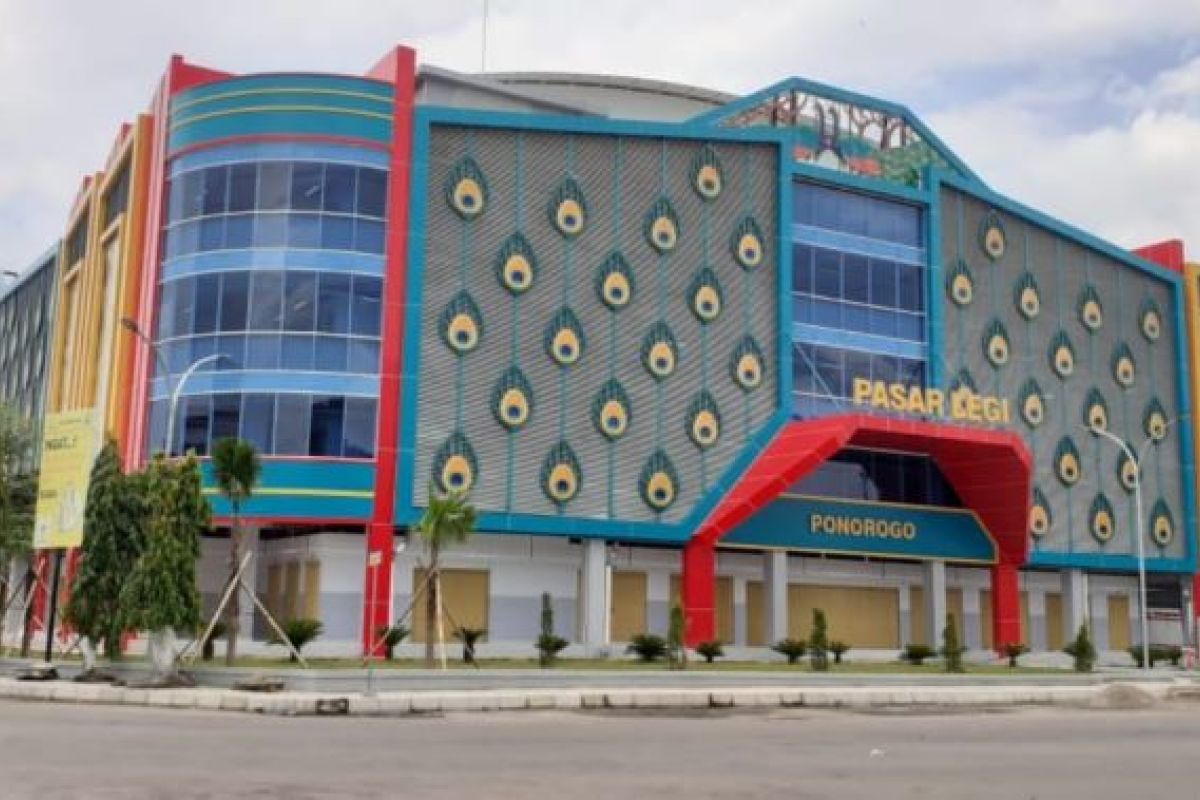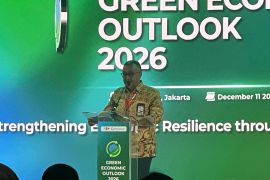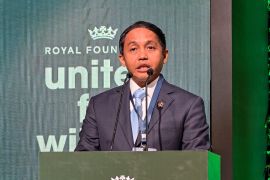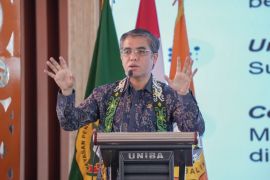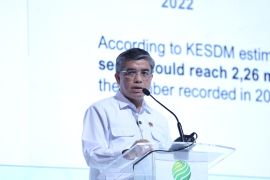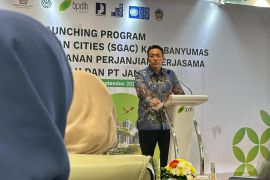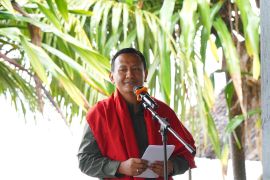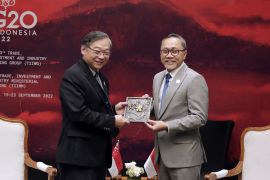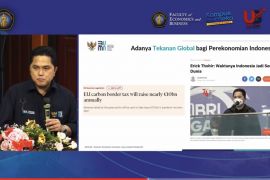Buildings are responsible for more than one-third of the final energy consumption and for around 40 percent of greenhouse gas (GHG) emissions (International Energy Agency, 2019).
Hence, energy-efficient buildings can significantly contribute to impeding global warming and evidently help in establishing sustainable economic development through a shift in conventional economic activities to green ones.
Iswara (2019) reported that Indonesia has made significant progress in greening the building sector through sound collaboration between the government and private sector. Green development in Indonesia has covered 25 million square meters (Iswara, 2019).
However, this is still far behind that achieved by some other neighbourhood countries (Iswara, 2019; Wimala, Akmalah, & Sururi, 2016). It is suggested that enhancing policy effectiveness coupled with strong government leadership can improve energy efficiency of the Indonesian building sector.
Policies and sustainability practice of the building sector
The Indonesian building sector accounts for 30 percent of the emissions after the industrial and transportation sectors (Dewi, 2017). Energy consumption of the Indonesian building sector may increase since it is predicted that the building floor area will more than double by 2050, and it is dominated by emerging economy countries (Dean, Dulac, Petrichenko, & Graham, 2016). Thus, ensuring an effective policy can be critical as a fundamental strategy to improve energy efficiency of the Indonesian building sector.
The Indonesian government has taken significant efforts to improve energy efficiency of the building sector. Several regulations have been issued from laws to ministerial decrees. Normatively, the commitment on conserving energy has been stipulated in Law No. 30 of 2007 on Energy.
At a more operational level, Ministry of Environment Regulation No. 8 of 2010 on Criteria and Certification of Environmentally Friendly Buildings and Ministry of Energy and Natural Resources Regulation No. 13 of 2012 on Energy Efficiency in Public Buildings were released to guide operationalization of energy efficiency in buildings.
Ultimately, the most recent regulations that strongly regulate green buildings are Jakarta Governor Regulation No. 60 of 2022 on green building and Ministry of Public Works and Housing Regulation No. 2 of 2015.
However, International Finance Cooperation (2019) underscored the need to enhance the current regulations and policies to reach the ambitious target of reducing Indonesia's GHG emissions from the building sector.
However, the existing regulations are perceived weak within the lack of government roles. Virgayanti (2017), in the Indonesian sustainable building regulation evaluation, argued that the regulations are considered weak, ambiguous, and debatable.
The legal standing of the ministerial decree is unclear, as it is not included in the hierarchy of legislation, while the command and control-based regulation may not hold relevance to the current environmental problem (Virgayanti, 2017).
Meanwhile, Berawi, Miraj, Windrayani, and Berawi (2019) revealed that the government roles are expected by the industry as an integral part of accelerating green development. Hence, a robust and strong mandate through leadership by example from the government can be potential policy innovation in accelerating the development of energy-efficient buildings in Indonesia.
Public sector building leadership in energy efficiency
Government leadership is considered as an important factor in improving energy efficiency in the building sector. Leading by example through ensuring public buildings are made more energy efficient has yielded success in driving energy efficiency in the building sector (Iwan & Poon, 2018).
The sustainability practices applied in the city of Vancouver showed that the government is in a pivotal position in driving sustainability practices in the building sector (Burch, 2017). This can be a reflection of acceleration of energy-efficiency efforts in Indonesia.
Indonesia has enormous opportunities to optimize its public buildings to be more energy efficient. It is a significant opportunity on account of more than 260 thousand buildings owned by the government (The Ministry of Finance of Indonesia, 2017) and the potential energy efficiency of Indonesian public buildings can possibly reach between 25 percent and 30 percent (Widhiantoro, Zen, Saputro, & Tumiwa, 2014).
The government's commitment to practicing sustainability in public buildings is recognized through new development of certified public green buildings (Green Building Council Indonesia (GBCI), 2018). However, developing new green buildings may take time since 98 percent of the building stock comprises existing old buildings (Dadzie, Runeson, Ding, & Bondinuba, 2018).
In addition, the initial investment for developing green buildings is relatively high (Berawi, 2019). This may cause budget limitation in developing new green public buildings. Hence, this raises concern on focusing to reasonably renovate existing public buildings to become more energy efficient or known as building adaptation.
Public building adaptation can be a suitable strategy for expanding the green practice to significantly contribute to Indonesia's energy efficiency. Building adaptation is more financially friendly than new development while also facilitating the government's business continuity (Wilkinson, 2014).
Moreover, the level of building intervention in building adaptation can be optimized to the best fit of the financial, material, and skills' availability based on the local context and capacity (Carli, Dotoli, Pellegrino, & Ranieri, 2017). In Indonesia's context, building adaptation can be an appropriate strategy to sustainably improve energy efficiency of public buildings, and this is expected to expand the role of government buildings as a form of leading by example in developing energy-efficient buildings.
Economy of public building energy efficiency
Government leadership in building energy efficiency is a driving force for realizing sustainable development of a platform economy. In addition to energy usage, government facilities, such as buildings, are commonly the main procurement of equipment users in the country, including energy-efficient equipment.
Consequently, as stated by Van Wie McGrory et al. (2002), focusing government procurement, investment, and operation of public buildings on energy-efficient products and services can stimulate a strong and sustainable market toward achieving energy efficiency.
Van Wie McGrory et al. (2002) emphasized that the initiative of energy efficiency by government-owned assets can leverage multiplier effect by both buyers and producers throughout the economy.
In Australia, investment in energy-efficient buildings has created more than 90 thousand jobs per year (Green Building Council Australia, 2020). Thus, despite the process of preparing skilled workers and technology being a time-consuming process, the pathway to more sustainable economic development needs to be established as part of the strategies in dealing with environmental challenges.
The potential benefit of developing energy-efficient public buildings in supporting economy growth can be a strategy for any country, including Indonesia, to drive the economy in a more sustainable manner. The significant number of government buildings can be a potential portfolio in the country's share of the economy.
Government leadership, in this context, apart from the significant potential budget saving from energy efficiency that can be allocated for other development priorities, can also stimulate the development of private sector buildings to follow on the same path of energy efficiency performance.
Hence, since the building sector is linked to several sectors in product and services, as stated by Van Wie McGrory et al. (2002), the interaction can leverage and sustain the country's green economy growth.
One and potentially for all
Energy efficiency in the building sector potentially contributes to dealing with global warming and supporting sustainable economic growth. It is well studied that conducting energy efficiency in the building sector contributes to lowering global GHG emissions. Meanwhile, energy efficiency in the building sector holds promise in terms of potential job creation and contributing to boost green economic growth.
Government leadership in energy efficiency is significant in reaching the success of energy efficiency in the building sector. The Indonesian public sector has potential roles in driving the private building sector through leadership by example in energy efficiency. This is expected to save the government's budget, contribute to eliminating global emissions, and can be a powerful step in the shift to a more sustainable economy.
*) Darmawan Atmoko is a senior analyst in Directorate General of State Asset Management, The Ministry of Finance.
The views and opinions expressed on this page are those of the author and do not necessarily reflect the official policy or position of the ANTARA News Agency
Copyright © ANTARA 2023
